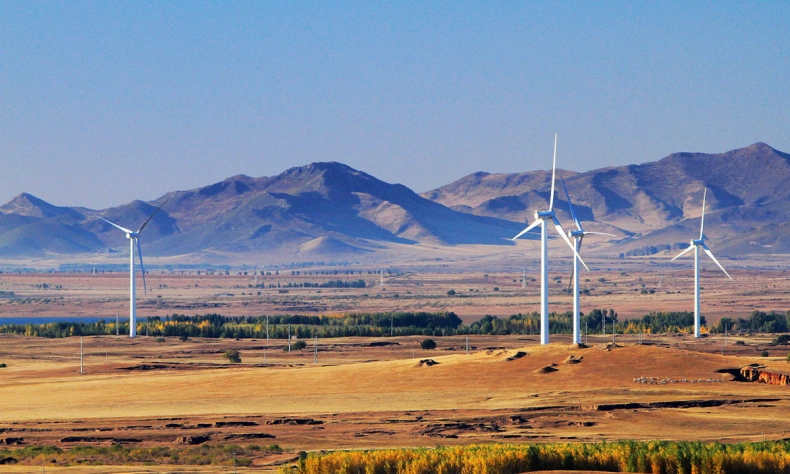
How China is Beating Pollution with Its Ultra-Low Emissions Policy
Previously, at the 2009 Copenhagen Summit, China had pledged to reduce its carbon intensity by 40-45% from 2005 levels and expand the share of non-fossil fuel in the energy supply to 15% by 2020.
Not too long ago, China’s mainland cities, especially during the winter, were often shrouded with a layer of haze caused by severe air pollution. This fact led the central authorities to include pollution control as one of the three critical battles launched in 2017 for the next three years, alongside poverty and financial risk. Since then, China has not only managed to turn the situation around drastically, but has also contributed significantly to meeting the United Nations’ target to limit the rise in global temperature to within 1.5-2 degrees.
Previously, at the 2009 Copenhagen Summit, China had pledged to reduce its carbon intensity by 40-45% from 2005 levels and expand the share of non-fossil fuel in the energy supply to 15% by 2020. Subsequently, in the Paris agreement, it went a step further by vowing to reduce carbon intensity by 60-65% from 2005 levels, and to boost the non-fossil fuel share to 20% by 2030. Strikingly, by 2018 the nation successfully achieved its Copenhagen targets two years ahead of schedule, while burning the candle at both ends to accomplish its commitment to the Paris accord.

It is worth mentioning that coal constituted an average of 69.9% of China’s energy consumption between 1985 and 2016, exacerbating its environmental problems, as coal is known to produce nearly twice the amount of carbon dioxide in comparison with other fossil fuels. In response to this mounting issue, in 2014 China implemented a highly ambitious, ultra-low emissions (ULE) policy for renovating coal-fuelled power plants. The goal was to limit the emissions of three significant pollutants responsible for smog: sulphur dioxide, nitrogen dioxide, and extremely fine particulate matter (PM 2.5 and 10), which it aimed to reduce to 35, 50, and 10 milligrams per cubic meter respectively by 2020.
A joint study published in the scientific journal Nature Energy on October 9, 2019 corroborated this commitment and the groundwork done by the Chinese government. Conducted by a team of experts from the U.K. and China, the study highlighted that the country’s annual power plant emissions of sulphur dioxide, nitrogen oxide, and PM 2.5 and 10 shrank by 65%, 60%, and 72% respectively between 2014 and 2017. It further stated that as a result of the implemented ULE policy, in 2014 the sulphur dioxide level dropped from 2.21 to 0.77 million tons; nitrogen oxide from 3.11 to 1.26 million tons; and PM 2.5 and 10 matter from 0.52 to 0.14 million tons. Additionally, in 2017 the nation’s carbon emissions per GDP unit plummeted 46% from 2005 levels.
The study also indicated that China is well on its way to accomplishing that set goal of limiting major pollutants originated from power plants by 60% by 2020. Researchers arrived at this conclusion after analyzing and extrapolating the emissions concentration data gathered by China’s continuous emission monitoring systems network (CEMS), which includes 96% to 98% of China’s thermal power capacity.
The study’s co-author, Dr. Zhifu Mi of the University College London’s Bartlett School of Construction and Project Management, stated that thermal power plants which burn coal, oil, natural gas, biomass or other fuels, are one of the top contributors to air pollution. He added that China’s significant reductions “demonstrate the technical and economic feasibility of controlling emissions from power plants to reach ultra-low levels, which is an important step towards reducing the number of deaths attributable to air pollution.”
Currently, at least 4.2 million people die every year due to ambient air pollution, with countries across Southeast Asia and Africa being the most affected, according to estimates from the World Health Organization. Additionally, household smoke generated from burning kerosene, coal, and biomass for cooking and heating homes leads to as many as 3.8 million deaths every year. Moreover, almost 91% of the world’s population lives in places where the air quality is not on par with the WHO guidelines. Therefore, air pollution is largely to blame for increases in cancer, coronary heart disease, cardiac arrest, and respiratory diseases such as Asthma, sinusitis and bronchitis.
Sadly, under the present circumstances, the efforts to fight environmental pollution are grossly inadequate. Looking at the irreparable consequences of environmental pollution, it is imperative for world leaders, enterprises, and ordinary people to join hands and take urgent action to deal with this problem. And China’s success story in confronting environmental challenges through implementing the ULE standards policy may well serve as a prototype for other nations grappling with these now worldwide issues.
Rachana Gupta is an active blogger, poet and freenlance content writer. She is also the author of the book “To The Horizon We Indeed Sail”.
Opinion articles reflect the views of their authors only, not necessarily those of China Focus.
 Facebook
Facebook
 Twitter
Twitter
 Linkedin
Linkedin
 Google +
Google +










